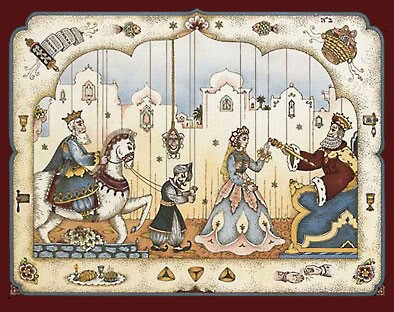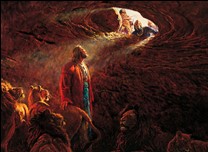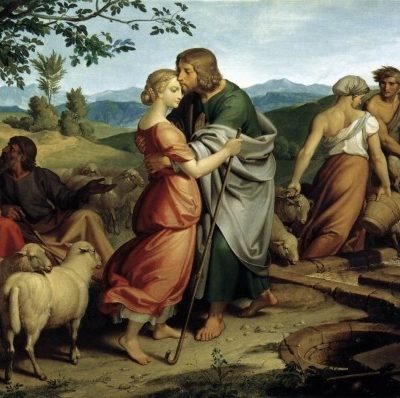Feast of Purim

Purim also called the Feast of Lots is celebrated in the month of Adar which is February-March on the thirteenth day. Purim is one of the most joyous holidays. It commemorates a time when the Jewish people in Persia were saved from being wiped out. The story of Purim can be found in the book of Esther. The Feast of Purim is the story found in Esther. It is about a brave courageous woman who saved the Jewish nation from being wiped out. It is a joyous holiday celebrated in the month of Adar which is in February-March.
The story of Purim is about the heroine Esther who was a beautiful Jewish woman living in Persia with her cousin Mordecai who considered her his daughter. She became the wife of Ahasuerus, the King of Persia who loved her and made her his Queen. The King did not know Esther was a Jew on the advice of Mordecai.
Haman, the advisor to the king, and is the villain of the story. When Mordecai refused to bow down to him, Haman plotted to destroy not only Mordecai but the whole Jewish people. Haman went to the king and complained about the Jews saying they did not obey the Persian law. The king put the fate of the Jewish people into the hands of Haman.
Mordecai went to Esther so she could speak to the king on behalf of all the Jewish people. Fasting for three days Esther prepared to go to the king. The holiday is to commemorate the three days fasting that Esther did before going to the king to show him what a villain Haman was. Purim means lots which refer to the lottery Haman used to choose the date for the massacre of the Jewish people and thus his own fate.
The Jewish people dress up in costumes depicting Queen Ester and Mordecai like a clowns because they have a right to be happy. Everyone brings noise makers so that every time Haman’s name is mentioned the noise makers sound. There are special filled triangular cookies that resemble Haman’s hat or ears called “Hammantashen.” (Hebrew Online Newsletter. 2008). The purpose in the Feast of Purim was to rejoice over the deliverance from death that Haman tried so hard to accomplish. The Jews gave gifts to one another and to the poor. Their deliverance often stirred the Israelites to praise. It is a happy ceremony. (Rosscup, 2008. Pg. 804). The Feast of Purim is considered a minor holiday. The holiday is led by the Fast of Esther, commemorating the period of assembly and fasting before the deliverance. On Purim, according to Talmudic practice, the Megillah which is the Scroll of Esther is read in the synagogue, charity is dispersed, gifts of food are exchanged, and a festive meal is eaten. (Achtemeier. 1985. Pg. 843).
The Jewish feast of Purim is celebrated on the 14th and 15th days of the month Adar which is February–March. It remembers the deliverance of the Hebrews from the murderous plans of the wicked Haman in the postexilic period. (Esther 9:24–32). The Persian Jews had been carried away by Nebuchadnezzar the king of Babylon.
This feast is named from the casting of the pur or lots to determine the most efficient time for the mass murder of the Jews on the order of Haman the son of Hammedatha the Agagite, who had been promoted by king Ahasuerus and set his seat above all the princes that were with him. (Esther 3:1). Purim was instituted by Mordecai and Queen Esther and is a national feast rather than a religious holy day. It is a feast of joy and feasting, a day of sending portions to one another, send gifts to the poor. (Esther 9: 17-19). And Mordecai wrote these things, and sent letters unto all the Jews that were in all the provinces of the king Ahasuerus, both near and far, to establish the yearly feast as the days wherein the Jews rested from their enemies, and the month which was turned unto them from sorrow to joy, and from mourning into a good day: that they should make them days of feasting and joy, and of sending portions one to another, and gifts to the poor. (Esther 9: 20-22).
The reading of the book of Esther is the reading of the Megillah which is read in the synagogue. The Megillah is read as a traditional chant or like a letter. It must clear and simple enough to be understood either in Greek or Hebrew. It has become traditional to come to the synagogue dressed as the characters in the Purim story and to make noise such as the stomping of feet and shaking noise makers whenever the name of Haman was mentioned during the readings in Esther. (Singer. 1901–1906. Pg. 275).
Jews sent gifts of food, especially dainties, to one another; and the poor were given gifts of charity. There were gift boxes put in some entrances of the synagogue to collect gifts for the poor. It is customary to place half of the unit coin of the country. This conforms to the half-shekel which had been given to the Temple in Adar. Others give according to the number of people in their family. The money is then given to the poor on Purim. (Singer. 1901–1906. Pg. 276).
The Fast of Esther begins the celebration before Purim, on the 13th of Adar, in memorial of the fasting of Esther, Mordecai, and the people. Because the feast of Purim is a celebration there are festive foods prepared for the festivity. There was to be one festive meal called “Seudat Purim” that was in the evening of the 14th. Cakes were shaped into certain forms and were given names having some symbolic connection and relevance for the historical events that took place on Purim. Drinking was allowed on Purim. It has been customary to burn Haman in effigy on Purim. (Singer. 1901–1906. Pgs. 278-279).
The influence and power of the authority of Queen Esther the daughter of Abihail, was added to Mordecai the Jew, wrote with all authority, to confirm this second letter of Purim. Mordecai sent the letters unto all the Jews, to the hundred twenty and seven provinces of the kingdom of Ahasuerus, with words of peace and truth, to confirm these days of Purim in their times appointed, according as Mordecai the Jew and Esther the queen had enjoined them, and as they had decreed for themselves and for their seed, the matters of the fasting and their cry. And the decree of Esther confirmed these matters of Purim; and it was written in the book. (Esther 9: 29–32).
King Ahasuerus laid a tribute upon the land, and upon the isles of the sea. King Ahasuerus and all the acts of his power and of his might, and the declaration of the greatness of Mordecai, whereunto the king advanced him, are written in the book of the chronicles of the kings of Media and Persia. Mordecai the Jew was second only to king Ahasuerus, and great among the Jews, and accepted of the multitude of his brethren. Mordecai sought the wealth of his people, and speaking peace to all his seed and generation. (Esther 10: 1–3).
References:
Achtemeier, Paul J. (1985). Harper & Row and Society of Biblical Literature, Harper’s Bible Dictionary. San Francisco: Harper & Row.
Hebrew Online Newsletter. (March 2008). “Purim”. Hebrew Online Newsletter. Issue #33 March 2008
Rosscup, James E. (2008). An Exposition on Prayer in the Bible: Igniting the Fuel to Flame Our Communication with God. Bellingham, WA: Lexham Press.
Singer, Isidore ed., (1901–1906). The Jewish Encyclopedia: A Descriptive Record of the History, Religion, Literature, and Customs of the Jewish People from the Earliest Times to the Present Day, 12 Volumes. New York; London: Funk & Wagnalls.
Cite Article Source
MLA Style Citation:
Holstein, Joanne “Feast of Purim:.” Becker Bible Studies Library Oct 2014.< https://guidedbiblestudies.com/?p=1693 ,>.
APA Style Citation:
Holstein, Joanne (2014, October) “Feast of Purim:.” Becker Bible Studies Library. Retrieved from https://guidedbiblestudies.com/?p=1693 ,.
Chicago Style Citation:
Holstein, Joanne (2014) “Feast of Purim:.” Becker Bible Studies Library (October), https://guidedbiblestudies.com/?p=1693, (accessed).


